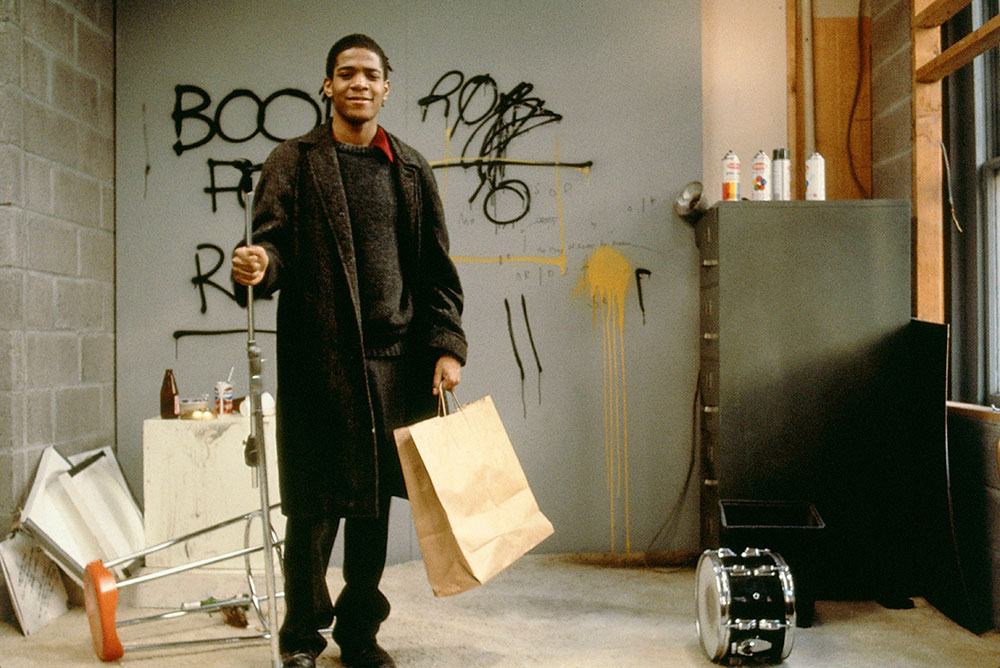
Did I ever tell you my Basquiat story? He painted the walls for a disco club in my building. When we left, his murals were still up. A corporate office was moving in, so they painted over them. -arm
I don’t remember the first time I ever met Jean-Michel Basquiat or IF I ever met him. Our relationship was more star-crossed than hand-pressing.
Our theatre company owned a building in Chelsea which had a large empty second floor which we used for rehearsals. We rented this space out at night for parties and events.
One event planner asked to rent it on a full-time basis given the proviso that they could decorate it.
Part of this decoration process was painting the walls. We gave them permission if they restored the place when they left.
Meanwhile, my friend owned a paint company and one of his accountants had a son who was an artist. Since I was in the arts, my friend asked if I could be helpful in finding him a gallery. Of course, I declined because the son was an unstable high school dropout punk art-type kid who would never amount to anything.
At the same time, my friend Andy Warhol had given his studio on North Moore St. to some kid who painted on walls for free. We all clucked our teeth and thought Andy was not only being played for a sucker, but worse yet, the kid paid him in worthless scribble-like paintings.
The next thing we know, this dopey-looking kid would come in at night and paint these scary-looking voodoo images all over our walls. They would light up under a certain light
This was at the very beginning of “graffiti” art. It wasn’t a matter of “tagging”, it was creating issue-oriented art in public spaces because you wanted to, not because you were commissioned or hoped to sell it.
Street Art became more and more “in vogue” as New Yorkers became more and more intrigued with the idea of “freethinking”. Social issues were being demystified in the visual arts.
Basquiat, Pere, reported that his son no longer had troubles finding a gallery; in fact, galleries were chasing him.
It was not until the father invited his boss and me to a party on North Moore St. that all three stars lined up. I realized what a big dummy I was. Jean-Michel, “the dopey kid”, was there and everyone in the art scene was fawning all over him. Ohhh! So this is the kid that Andy thought was so terrific.
Amongst the works was a portrait of his mother, Matilde, who it has been said encouraged her son’s creativity by taking him to museums, including the Brooklyn Museum, enrolling him there as a junior member when he was only six. The picture was conventionally painted with no graffiti and no words. It was so strong an image; an emotional image, that you could feel the intelligence and kindness of this woman oozing out of the canvas and into your heart.
The father, Gerard, was a businessman: he owned several apt. buildings in Brooklyn. I remember he told landlord stories, but I forget if they were for or against tenants.
There was talk about Jean-Michel not being friendly with his father because he dumped them for a white woman. Well, that could be true, but the two of them seemed to be getting along on this night.
With many people in the arts, they are not appreciated by their families. This was not true of Gerard. He knew his son’s worth and appreciated it.
The convergence came a tad late, however. The people who rented the space for an “after-hours” club went out of business and true to their word, painted over those scary voodoo images. We went back to renting the space for weddings and birthdays.
Ahhhh! What had I done?
Will his legacy encourage street artists? I’m not sure. After all, JMB was a street artist with classical training. He chose to be a street artist.
Because of Gerard’s careful attention to JMBs work after he died, the legacy of being a highly valued artist endures, and that is good. It is important that young people understand that in America art is valued by fiscal reality as well as artistic.
Basquiat’s intelligence was such that whatever he chose to do would have been successful.
-To Be Continued.
(Abigail Rosen McGrath’s BOTTLED is a recurring feature in Our Time Press. Bernice Elizabeth Green is the creator and editor of the First Thursday and First Thursday (Redux).
